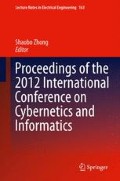Abstract
Some of the ads for psychology theory in the teaching of multimedia courseware making a direct role, can make multimedia courseware can have a advertisement effect, can always attract the attention of the learners, arouse their interest and strengthen the memory, so that the student’s in classroom feeling, perceived ability is developed, and really improve the quality of teaching. As a teaching auxiliary multimedia means to be used in the psychology of teaching, solve the psychology is “a very little” contradiction, reform teaching methods, the best choice of psychology, also is the only way. How to better use of modern multimedia technology, play to its advantage, to be abstract concepts into image visual graphics, change is far near, for the static dynamic, change small is great, control all kinds of information media used for the teaching. Teaching workers should pay attention to the problem.
Access this chapter
Tax calculation will be finalised at checkout
Purchases are for personal use only
References
Tolhurst D (1995) Hypertext, hypermedia, multimedia defined? Educ Technol 3:21–26
Neo M, Neo TK (2000) Multimedia learning: using multimedia as a platform for instruction and learning in higher education. In: Proceedings of the multimedia university international symposium of information and communication technologies, Shanghai, vol 10, pp 4–6
Miller GA (1956) The magical number seven plus or minus two: some limits on our capacity for processing information. Psychol Rev 63:8l–97l
Mayer RE, Moreno R (2003) Nine ways to reduce cognitive load in multimedia learning. Educ Psychol 38:43–52
Mayer RE, Sobko K, Mautone PD (2003) Social cues in multimedia learning: role of speaker’s voice. J Educ Psychol 95:419–425
Atkinson RK (2002) Optimizing learning from examples using animated pedagogical agents. J Educ Psychol 94:416–427
Author information
Authors and Affiliations
Corresponding author
Editor information
Editors and Affiliations
Rights and permissions
Copyright information
© 2014 Springer Science+Business Media New York
About this paper
Cite this paper
Li, H., Zhang, G. (2014). The Application of Psychology in the Production of Multimedia Courseware. In: Zhong, S. (eds) Proceedings of the 2012 International Conference on Cybernetics and Informatics. Lecture Notes in Electrical Engineering, vol 163. Springer, New York, NY. https://doi.org/10.1007/978-1-4614-3872-4_35
Download citation
DOI: https://doi.org/10.1007/978-1-4614-3872-4_35
Published:
Publisher Name: Springer, New York, NY
Print ISBN: 978-1-4614-3871-7
Online ISBN: 978-1-4614-3872-4
eBook Packages: EngineeringEngineering (R0)

